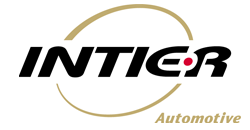Intier Automotive Interiors - Case Study

Intier Automotive Interiors (Intier) is part of the Magna Group, a multi $billion Canadian company, working in the Automotive industry. Intier manufactures interior systems for cars and in the UK their customers include Nissan, Toyota, Honda and BMW. Intier has five divisions (operational plants) in the UK.
As part of a broader project to close its original head office in the south east of England and relocate to the midlands, Intier wanted to review how their payroll service should be provided. Intier employed three staff to input base data and manage the payroll for their 2,000+ staff. They had already outsourced the “gross to net” part of their payroll to MoorePay, part of the Northgate Group. The decision was taken to transfer as much of the payroll work as possible to MoorePay, recruit a new payroll co-ordinator and minimise the impact of any change on the divisions.
The issues facing Intier was to maintain, and ideally improve, the payroll service while closing the south east head office, how to reduce costs and how to provide an error free payroll service in the future. The existing payroll staff had already rejected the option of relocating to the new head office in the midlands, and the key member of staff was scheduled to retire in four months’ time.
The in-house payroll service had grown over the last 20+ years, was largely undocumented and relied on many manual calculations being made outside the payroll system, and supported a business based on many different sets of terms and conditions. This complexity greatly added to the risks associated with the project and made senior management very nervous of any change to the status quo.
At the outset, the project had the following objectives:
- Complete transfer within four months
- No disruption to the payroll service
- Minimise risks
- Recruit a payroll co-ordinator
- Strengthen existing contract with MoorePay
- Implement standard data entry forms
- Implement more formal checking
- Reduce the number of payroll errors
- Simplify and standardise payroll process
- Minimise impact of the changes on the Divisions
Intier wanted to transfer the payroll work away from its south east site in the most risk free way, and with minimal impact on the divisions. Therefore at the start of the project we identified the main risks and mitigating actions. Some of the risks included:
- Loss of control
- Costs may escalate
- Level of service reduces
- Increase in workload for divisions
- Project given a low priority by senior managers
- Failure to identify all payroll duties
These risks were monitored throughout the project.
Quantum Plus project managed the transfer of the payroll. This work started with scoping the project, producing a project plan, a risk register, forming a project team consisting of Intier and MoorePay staff and assisting with communications within the Intier business.
At the start of the project the existing payrolls (8) were re-organised to allow them to be more easily controlled and checked now that they were going to be managed by each Intier division, rather than a central payroll function. During this set-up stage all payrolls were simplified, and additional generic automation was built into the system to eliminate risks associated with manual calculations. Furthermore standard data input forms were developed and rolled out across Intier for new starters, leavers and temporary adjustments.
Each payroll was transferred after extensive planning which included reviewing the payroll structure and considering opportunities for simplification and automation. Once transferred each payroll was meticulously checked prior to the actual pay-run using MoorePay’s on-line “preview” facility. After each payroll was transferred a formal lessons learnt session was held which fed into the process for the transfer of the next payroll.
A new payroll co-ordinator was recruited who would be responsible for payroll policy, managing MoorePay and working closely with the divisional HR/payroll team to ensure the accuracy of the payrolls.
The progress of the project was monitored through weekly progress meetings and through the collection of payroll performance data such as the number of errors, queries and the amount of payroll input data submitted late.
The result was a successful transfer of the payroll service from a central function to MoorePay, the payroll co-ordinator and the divisions. The service is more stable than before as it now involves far fewer manual calculations and includes more rigorous checking the divisions and quality procedures implemented at MoorePay.



